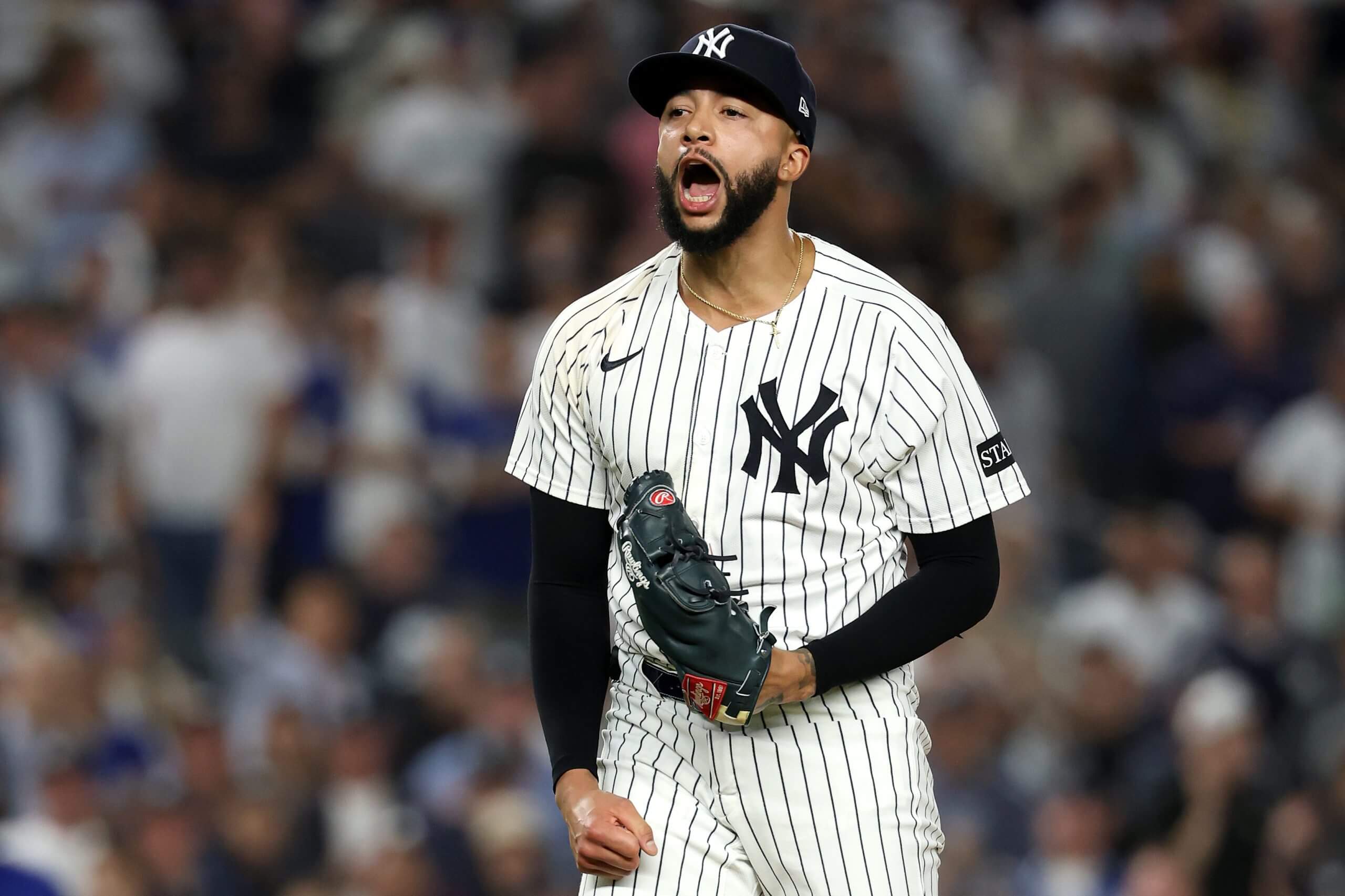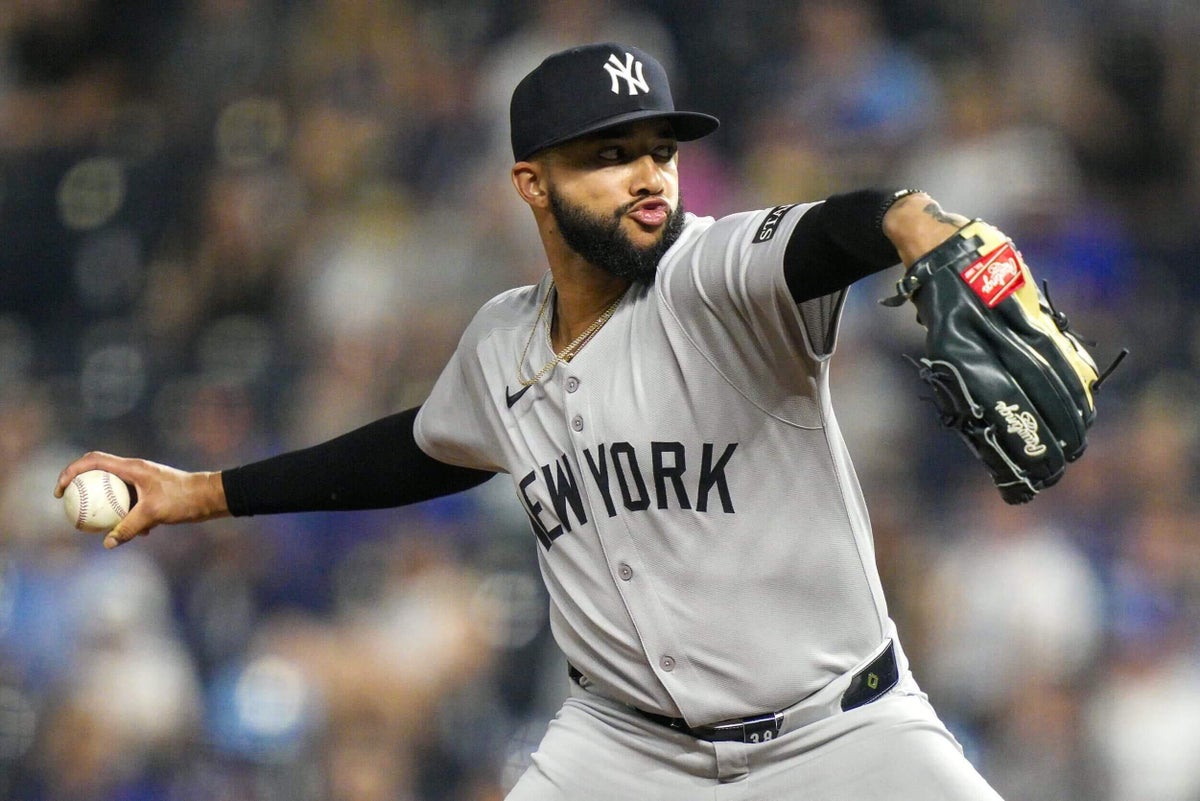LAS VEGAS — Within a deep free-agent class of closers, Devin Williams stands out as a fascinating case for an industry that attaches a high value to pitchers with elite “stuff.”
Yes, Williams posted a career-worst 4.79 ERA while pitching for the New York Yankees in 2025. Yet Williams, who held a 1.83 ERA over his previous five seasons, also finished within the top 4 percent of MLB in strikeout rate, whiff rate, chase rate and expected batting average.
“As far as my stuff, I felt it was as good (as), if not better than, it has been in years past,” Williams said in a recent phone interview.
At least a couple of executives echo the sentiment.
“He should be viewed as someone who can be an elite option,” one high-ranking National League club official said.
One week into free agency, approximately 12 teams, including the Los Angeles Dodgers, Boston Red Sox and Cincinnati Reds, expressed interest in Williams, league sources said.
Indeed, Williams, 31, is a popular name at The Cosmopolitan of Las Vegas, home of this year’s general managers’ meetings. What makes Williams’ free agency so interesting is the discrepancy between industry opinions on what kind of contract he can land, largely due to his 2025 season. The Athletic’s Tim Britton projected Williams for one year, $18 million, whereas MLB Trade Rumors suggested four years, $68 million.

Devin Williams mostly pitched well in 2025, but a few blow-up outings disrupted his stat line. “When I had a bad game,” he said, “it was terrible.” (Al Bello / Getty Images)
While Edwin Díaz ranks atop the closer market (No. 11 overall on The Athletic’s Free Agent Big Board), some scouts view Williams (No. 19 on the Big Board) as the next-best option, though others prefer Robert Suarez. That’s partially because they are confident they can explain Williams’ uncharacteristic ERA, an imperfect stat, particularly for relievers, and one that is not viewed as predictive of future performance.
Williams’ ERA is worth digging into. Last season, Williams made 67 appearances and pitched 62 innings, both career bests. He allowed 33 earned runs. The kicker, from his perspective: 16 of them occurred in just five games.
“As far as my feel and my command, I even lowered my walk rate this year, even with kind of the way that the year went,” Williams said. “The statistics ended up the way they were because I had four or five blow-up games. They ended up scoring three or ended up scoring four. I just wasn’t able to get out of it after one run. That contributed to why my ERA looks the way that it did. It wasn’t necessarily like I was bad in every game. It’s just when I had a bad game, it was terrible.”
To drill down more specifically, there was also an interesting week in early August when Williams allowed three home runs: one in each game to three left-handed batters, including twice with a runner on first base or second base. Each of the home runs came against changeups, Williams’ signature pitch. The week highlighted an uncharacteristic issue within a narrow split — struggles against left-handed batters with runners on base — that Williams later resolved.
In just 12 innings against left-handed hitters with runners on base, Williams allowed 21 of his 33 earned runs. In 2025, left-handed batters slugged .468 with runners on base against Williams, a figure drastically at odds with a .276 slugging percentage from 2019 to 2024 for the same split. In 2025, Williams’ strand rate when facing left-handed batters was 38.2 percent, while his career strand rate against lefties from 2019 to 2024 was 87 percent.
In several instances against left-handed batters and runners on base in 2025, Williams simply missed locations with his changeup. Too often, the pitch drifted inside and over the middle instead of low and away.
But that mostly changed after that first week of August. After Aug. 10, Williams struck out 43.8 percent of the left-handed batters he faced with runners on base (compared to 26.7 percent previously) while holding them to a .308 slugging percentage.
Williams attributed the better results to a realization he had made. He said he eventually felt he was rushing through his delivery to give a catcher a better chance at throwing a runner out at times.
“As a kid, you’re told you have to start learning yourself because you’re going to be your own best coach, because no one else knows how your body feels or knows the way that your mind is working at any given point,” Williams said. “So that was something that I noticed that I was pulling the changeup. And really, just after that, I tried to stay through it and trust my delivery and trust my catcher that he’s going to throw him out if he does try and steal. But at the end of the day, you have to execute pitches first.”
The improvement against left-handed batters with runners on base coincided with a dominant run over the final weeks of 2025 that was more reminiscent of Williams’ previous seasons. From Aug. 10 to the end of the season, he had a 2.50 ERA (0.36 FIP) in 19 games, striking out 34 of the 70 batters in 18 innings.
Before getting traded to the Yankees last offseason, Williams spent his entire professional career with the Milwaukee Brewers. In Milwaukee, he won the National League Rookie of the Year Award in 2020 and rose to prominence as one of the game’s elite relievers. In New York, success for Williams was not as linear. Williams, however, said he appreciated the different adventure and all that came with it. After all, free agency may or may not lead to more newness.
“I kind of got the complete experience,” Williams said. “I started off bad. They’re booing me as I come out of the bullpen, so obviously, I got the worst of it at the beginning. And then in the end, I think against Toronto, they gave me a standing ovation as I’m coming off the mound. I got the full experience.
“It’s a unique place to play. It’s a special place to play. They have a lot of history, a fan base that wants to win and a fan base that is very passionate about their team. So it was really cool to experience something like that. To be able to say that I played for that team for at least a year will be something really cool to look back on.”

